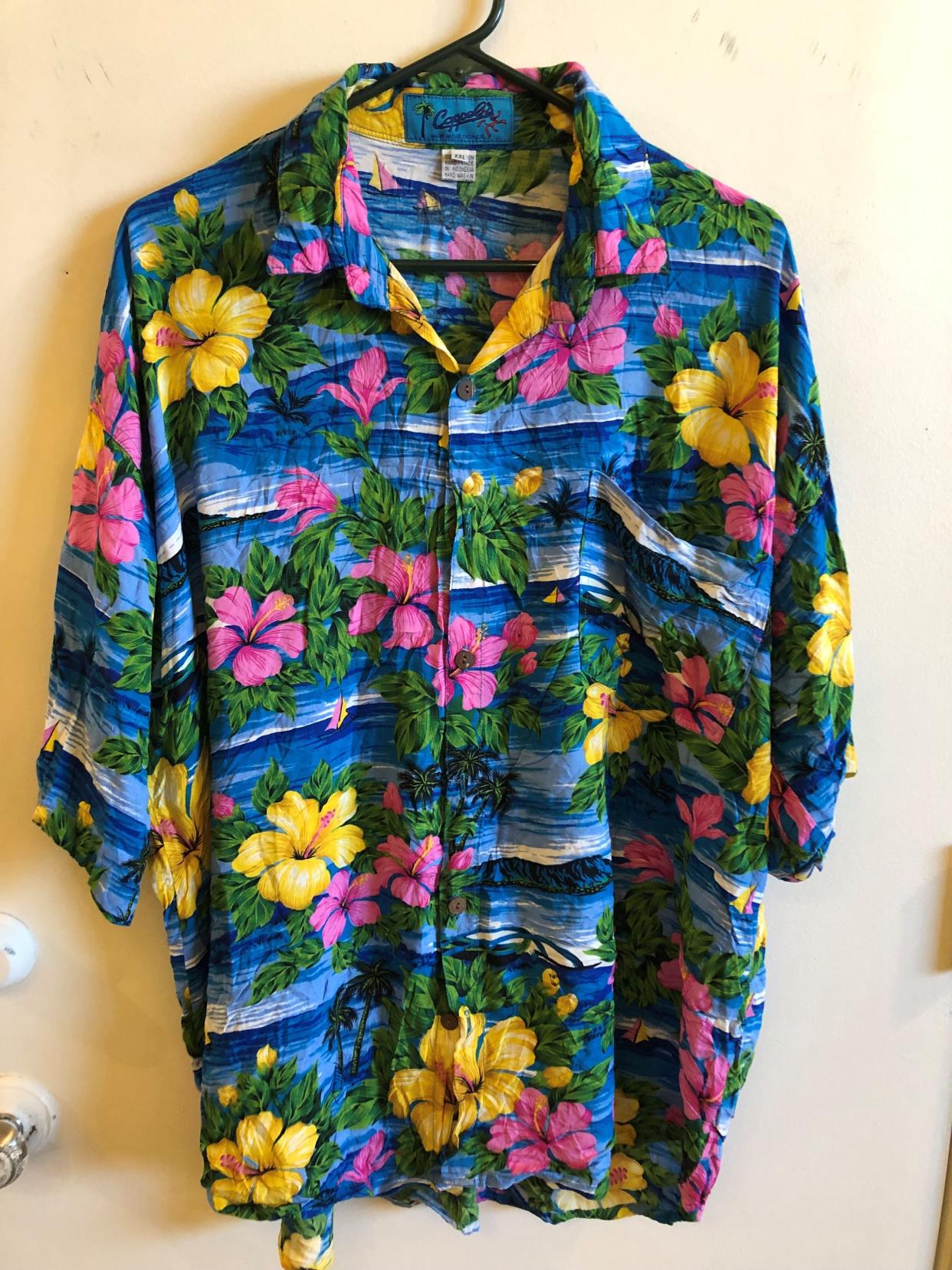Antiques: The lei'd back vibe of the aloha shirt

Although vintage clothing isn't a usual topic of this column, we just received a mountain of vintage Hawaiian shirts and were at a loss as to what to say about them. As it turns out, Hawaiian shirts have been around for 100 years and have a rather interesting cultural history. Who knew? So, before we try on a few — one more garish than the next — let's nibble on a few macadamia nuts while we dig around to find out more.
It turns out that Hawaiian shirts emerged from a period during World War I in which everything Hawaiian was in style, especially the music. Ukuleles were the musical instrument of choice in college dormitories across the country, and the best nightclubs all had their own warbling acts.
The craze faded into the 1920s but the Depression era once again brought Hawaiian culture to the fore, this time in the form of shirts. While the exact origin of such shirts is hard to pinpoint, it is likely that seamstresses from Hawaii's large Japanese population began making colorful silk shirts from used kimonos. It took a decade but by the middle 1930s the style had crossed the Pacific to become a rage in California and points east. The Hawaiian shirt had arrived.
And it was hardly a sure thing that the look would catch on, especially among men. Such loud and colorful designs were generally reserved for women's wear with most men of the era opting for a more drab and uniform appearance. Nonetheless, when the man on the street saw celebrities such as Der Bingle (Bing Crosby) and Olympic gold medalist Duke Kahanamoku wearing Hawaiian shirts, they went out and bought their own. For just a dollar, the common man could look just like the big names of the day while turning himself into his own island paradise.
Since then, the popularity of Hawaiian shirts has ebbed and flowed but has never disappeared. In the 1960s, they were big once again with the likes of Elvis Presley and his Hawaiian movies helping to lead the way. From there, the hippies turned to tie-dye and the yuppies to khakis and button-downs, but Hawaiian shirts have returned to the fore in the last decade, especially in resort towns and coastal communities. The makers and varieties have become nearly endless, allowing wearers some individuality while still giving off the island vibe. Their typically billowing cuts also encourage an untucked look, helping to mask the all-too-frequent dad bods underneath.
If you're a Hawaiian shirt collector, and there are many, you know that there are certain makers and styles to look for. The Hawaiian surfer Rube Hauseman was an early maker, using fabric from Japanese shops to make shirts that took the local bar scene by storm. Shirts by Elsie Das emphasized the hibiscus flower, while Bing Crosby shirts proved a great tie-in to his albums of Hawaiian music.
Post-WWII shirts with a hodge-podge of island imagery are known as "chop suey" designs, while the early Japanese designer Musa-Shiya is often credited with starting the whole thing as early as the 1920s. Prices have remained moderate for all but the most coveted models. So, whatever your preference, just know that every Hawaiian shirt is a hukilau song all by itself.
Mike Rivkin and his wife, Linda, are long-time residents of Rancho Mirage. For many years, he was an award-winning catalogue publisher and has authored seven books, along with countless articles. Now, he's the owner of Antique Galleries of Palm Springs. His antiques column appears Sundays in The Desert Sun. Want to send Mike a question about antiques? Drop him a line at info@silverfishpress.com.
This article originally appeared on Palm Springs Desert Sun: Antiques: The lei'd back vibe of the aloha shirt

